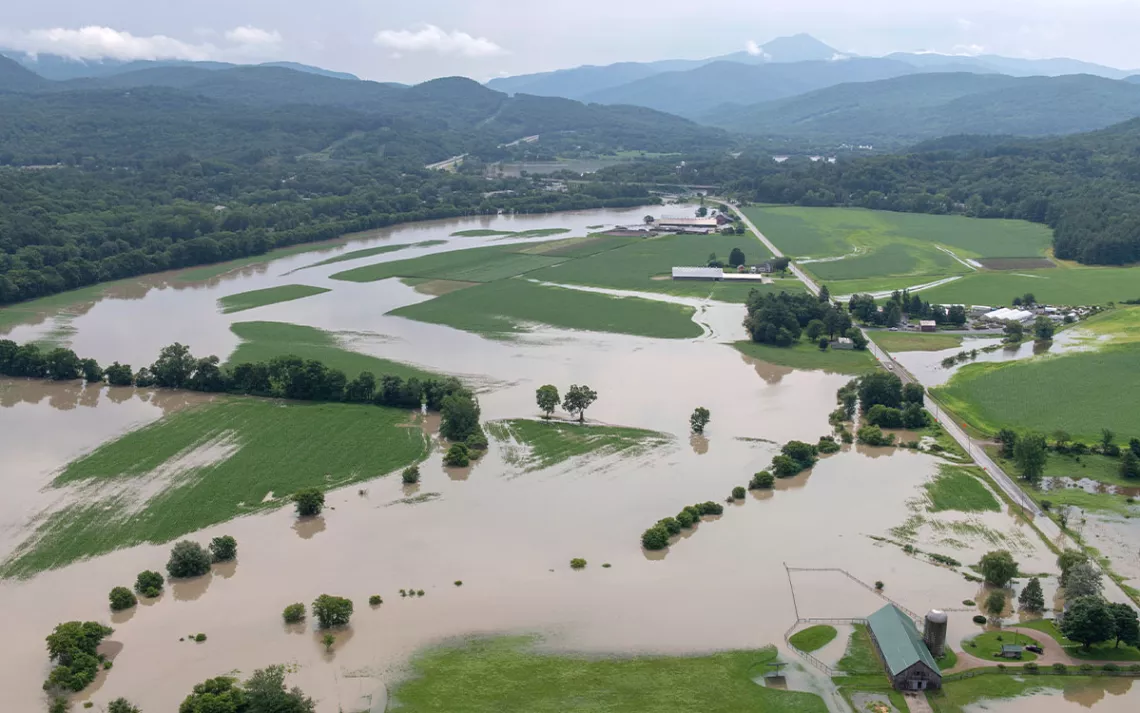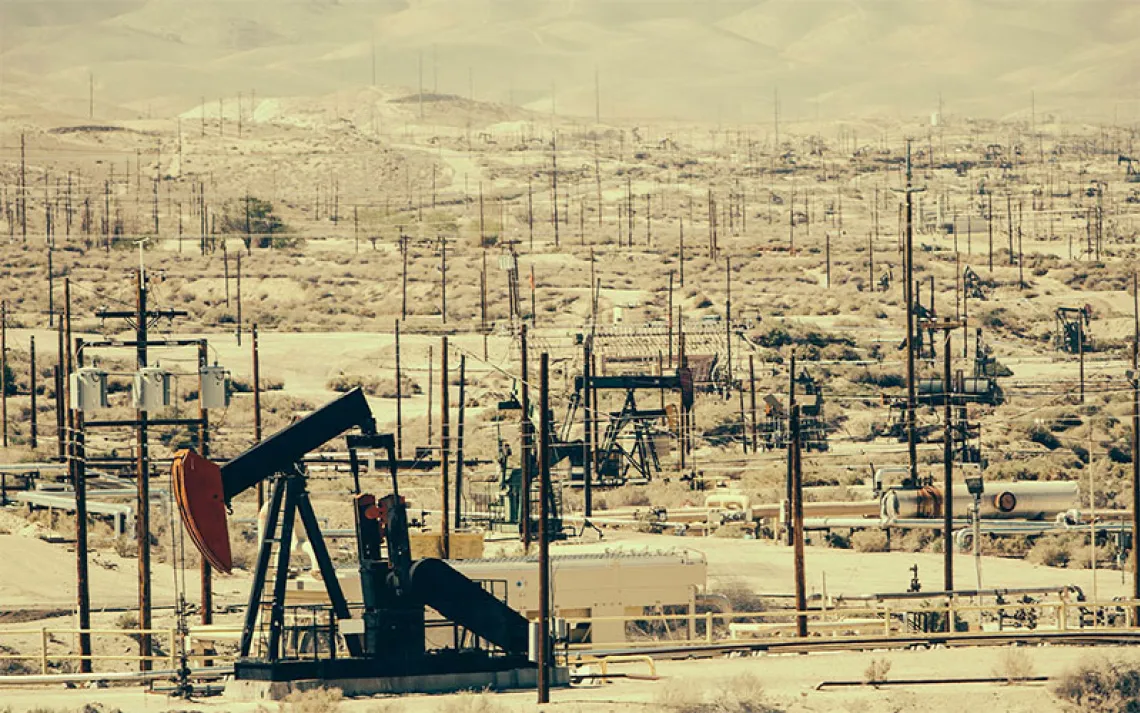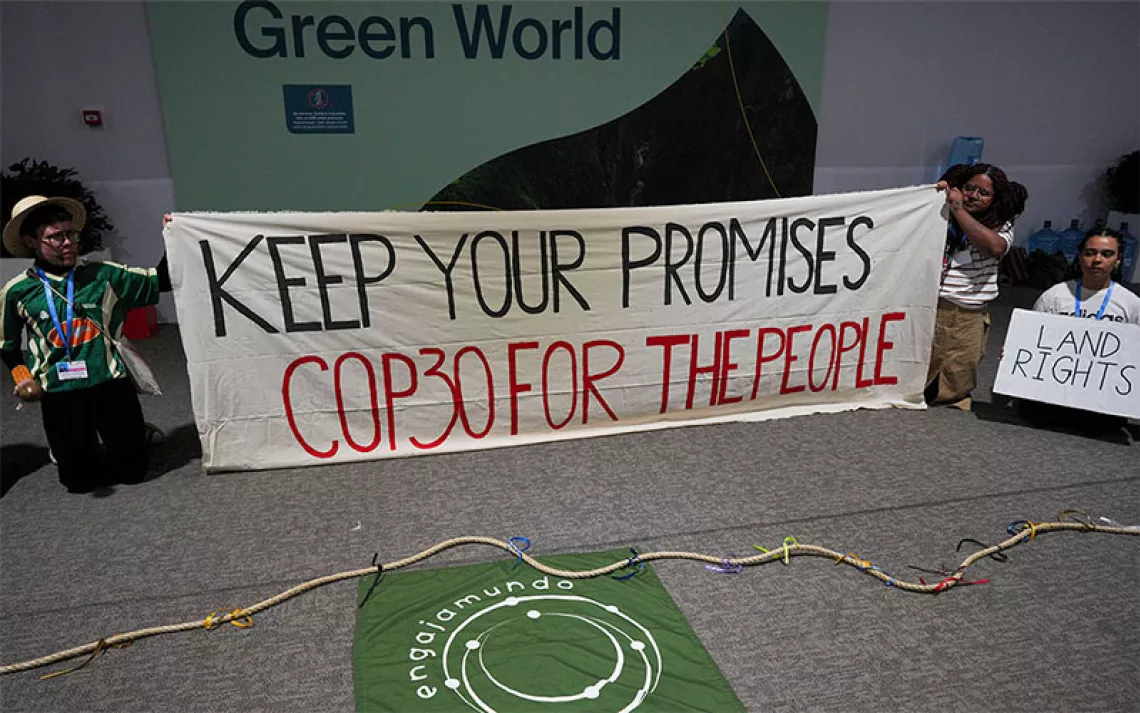What Does a Resilience Officer Do?
These state officials are the next frontier of climate mitigation

Catastrophic flooding in Richmond, Vermont, in July 2023. | Photo by US Air National Guard/via AP
When devastating floods hit Vermont in July, a year to the day after a previous storm and subsequent deluge, Stephanie Smith noticed a shift taking place around her. “People are thinking, ‘This is not a one-off thing,’” she said. “This is going to keep happening, and what do we need to do about it?”
Smith’s job title doesn’t include the word resilience. But as Vermont’s state hazard mitigation chief, she’s part of a growing workforce that is increasingly focused on climate resilience, a term that broadly means preparing for the impacts of extreme weather before a specific threat arrives. The “what to do about it,” in other words, fell to her.
What’s happening in Vermont is illustrative of trends across the country. As federal resources stretch ever thinner and climate change turbocharges extreme weather, state-level officials, already important partners to the federal government, are filling the gaps. Twenty-eight states have some type of resilience body, in the form of an office, an individual officer, a commission, or a task force, according to the National Conference of State Legislatures (NCSL). At least a dozen of those states have set up resilience programs since 2019.
Smith said Vermont legislators have discussed hiring a chief resilience officer, an effort that gained urgency after repeated flooding events in the past two years claimed three lives and caused hundreds of millions of dollars in damage. The role, if it’s created, would likely operate in partnership with Smith and other initiatives like the state’s Climate Action Office, which coordinates across state agencies. Earlier this year, Governor Phil Scott announced a plan to develop a statewide resilience strategy by July 2025.
In contrast to traditional disaster response efforts, resilience officials are typically focused on preemptive strategies to reduce risk long before a specific threat is identified. That work can include coordinating plans between state and local governments, engaging community groups, disseminating funds, and developing extreme weather mitigation plans.
In a sign of the universal need for adaptation, resilience spans the entrenched divisions that shape so much of environmental policy. There are resilience officers in Democratic- and Republican-led states, coastal states and landlocked states, states that see regular downpours and states where it hardly ever rains.

Sign up to receive Sierra News & Views
Get articles like this one sent directly to your inbox weekly.
With this action you affirm you want to receive Sierra Club communications and may vote on policy designated by the Sierra Club Board.
Natural disasters cost the US at least $93 billion last year, according to the National Oceanic and Atmospheric Administration. But federal resources to respond to those disasters are not always able to meet demand. The Federal Emergency Management Agency (FEMA) has resisted calls to respond to extreme heat as a major disaster, and federal inspectors found last year that the agency faces a staffing shortage of about 6,200 people, or 35 percent of its workforce. In the fall, back-to-back hurricanes Helene and Milton, along with a string of lower-profile disasters, stretched the agency’s staffing reserves to record lows.
Resilience officials said their expanding presence across the country allows states to complement critical federal assistance with additional efforts that may better target the needs of specific communities. “We’re not tied to just the little FEMA boxes of things that we can fund,” Smith said. “We can think a little bit bigger.”
While the need to expand resilience is widely agreed upon, the exact definition of the term is anything but. According to NCSL, resilience “explores and addresses the underlying vulnerabilities to hazards, and links the environment, social, and economic sectors to help communities better adapt to changing conditions.” The Union of Concerned Scientists defines it as “successfully coping with and managing the impacts of climate change while preventing those impacts from growing worse.”
Linda Breggin, who directs the Environmental Law Institute’s Center for State and Local Governance, put it simply: “Resilience captures what we all want, which is to have healthy communities that can respond to the impacts of climate change and do so in an equitable manner.” Still, she added, “I can’t say that I’ve come to a clear understanding of what should be under the resilience umbrella. It’s something I’m still thinking about and trying to understand.”
The differing ways resilience efforts are housed within state governments reflect those varied understandings. In New Jersey, the Office of Climate Resilience is part of the state’s Department of Environmental Protection. In North Carolina, resilience is the responsibility of the Department of Public Safety. West Virginia folds it into the Department of Commerce. And in Colorado, it’s a part of the Department of Local Affairs.
Within a state government, different agencies with similar missions may tackle many pieces of what a resilience office would do. Coordinating those efforts and avoiding redundancy is often a stated goal of resilience officials, but many lack the authority to take steps that would streamline other agencies’ work.
“It’s rare to have a resiliency officer who actually is empowered to navigate that fragmentation,” said Alessandra Jerolleman, director of research for the Center on Environment, Land, and Law at Loyola University New Orleans. “Greater coordination is needed. Somebody at the state level could definitely do that, if they’re empowered to do so.”
The Colorado Resilience Office, as its parent agency suggests, focuses on supporting the work of local governments to ensure they’re prepared before a fire, drought, or flood arrives. The state’s resilience officials advise on planning and land-use decisions, host forums for local governments to exchange ideas, and have developed a suite of pre- and post-disaster resources that are freely available online. The office even puts on Camp Resilience, a day-long leadership training for local government staff from across the state. “The very essence of resilience is to be proactive,” Anne Miller, the office’s director, said. “It’s really challenging to make those kinds of changes in a post-disaster setting.”
In other parts of the country, resilience offices focus primarily on sea-level rise and coastal flooding. Rhonda Price, the director of Mississippi’s Office of Restoration and Resiliency, is helping harbor masters make their marina offices and other essential infrastructure mobile so the structures can be towed inland during a storm. “That’s a big loss for a marina, so if they can trailer a lot of their facilities out, that’s a loss that they don’t have to deal with,” Price added.
New Jersey’s chief climate resilience officer, Nick Angarone, said his work runs the gamut from managing upgrades to sewage and stormwater infrastructure to restoring coastal marshland. He also oversees the state’s voluntary flood buyout program, which assists residents with relocation and reverts high-risk properties back to nature. Lately, though, Angarone’s focus has been pulled toward a threat his corner of the country is enduring with increased frequency: heat.
New Jersey has warmed around 4°F since 1900—roughly twice the global average, according to a 2023 report from the New Jersey Climate Change Resource Center at Rutgers University. The state’s Department of Environmental Protection published an extreme heat resilience plan earlier this year and also runs a website detailing the dangers heat poses to environmental and human health.
“We’re not Arizona—we’re not seeing 100 days in a row of 100 degrees or more,” Angarone said. “But this summer we had three heat waves in a five-week period. We’re not accustomed to those types of events, and that has real impacts on people’s daily lives.”
Even in Arizona, where dangerous heat has long been the norm, officials are constantly working to develop new adaptation strategies. The state’s first chief heat officer, Eugene Livar, was appointed in March to oversee the rollout of Governor Katie Hobbs’s Extreme Heat Preparedness Plan, which lays out recommendations for state agencies, including heat-mitigating design for affordable housing and urging the creation of a task force to assist with long-term disaster recovery.
Livar’s focus is on boosting coordination between the various agencies that handle heat preparation and response. He said his background in epidemiology, a field where advance planning can make the difference between an isolated infection and a pandemic, set him up for success in the role. “The chief heat officer role is well positioned to ensure a close connection between federal and local extreme heat resiliency efforts, and be that bridge for that communication,” Livar said.
Back in Vermont, Smith’s office has its largest-ever budget—close to $160 million in combined federal and state funding. Still, Smith continues to search for the right balance between preparing for future disasters and responding as they happen. “We’re in a place right now where everything is coming at us really fast,” she said. “But the intent of the program is really to think big picture, long term, and to remove the risk before things go wrong.”
 The Magazine of The Sierra Club
The Magazine of The Sierra Club



